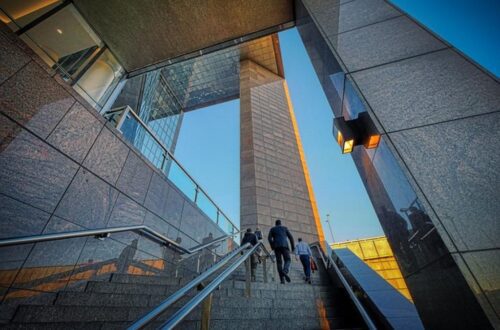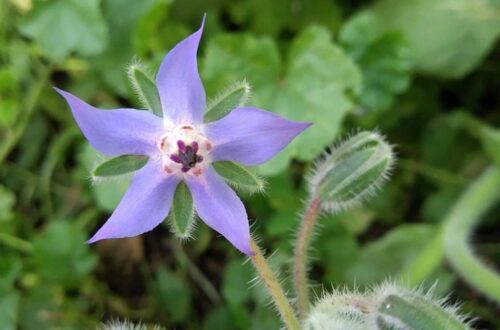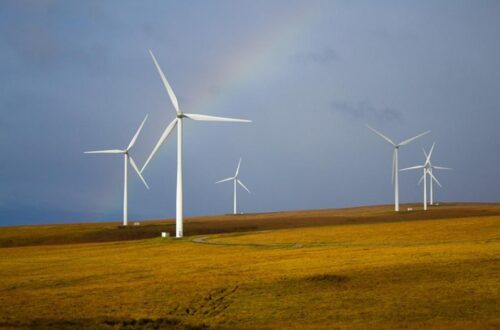Imagine your favorite local park filled with vibrant green spaces, clean air, and eco-friendly benches that promote sustainability. Sounds ideal, right? One surprising plant might help make this vision a reality: hemp.
Long misunderstood, hemp is a powerhouse of versatility and sustainability. It’s sturdy, fast-growing, and requires minimal pesticides, making it perfect for public parks. Think of hemp as nature’s multi-tool—it can be used for everything from revitalizing soil to creating durable materials for park amenities.
So why not harness the power of hemp to help our urban green spaces thrive? Let’s delve into the many ways this incredible plant can transform our parks into sustainable havens.
Hemp As an Eco-Friendly Alternative for Park Maintenance
Picture this: lush lawns and flower beds requiring less water, and resilient pathways that are kind to our environment. Hemp can make this possible for urban parks by offering sustainable solutions for everyday maintenance.
First off, hemp plants improve soil health by nourishing it with essential nutrients. They naturally combat weeds, reducing the need for harmful pesticides and chemicals. This means fewer pollutants ending up in our water systems and a safer place for us and local wildlife.
Water Efficiency
Hemp’s deep roots are excellent at retaining water and protecting soil from erosion. This trait makes hemp ideal for areas prone to drought. Furthermore, the plant’s robust nature allows it to thrive in various climates, reducing the constant need for irrigation and care.
Durable Materials
From building sturdy benches and playground structures to crafting mulch and compost, hemp offers many eco-friendly alternatives for park amenities. These hemp-based materials are not only durable but also biodegradable, minimizing waste. Imagine sitting on a comfy park bench that’s been made sustainably!
Incorporating hemp into our park maintenance routines is not just a trend; it’s a step towards a greener and more sustainable future for our urban spaces.

Benefits of Using Hemp in Landscaping and Green Spaces
Hemp is not just a versatile plant; it’s a game-changer for landscaping and creating vibrant green spaces. The benefits are vast, making it an eco-friendly choice for both professional landscapers and home gardeners.
One major perk is hemp’s rapid growth rate. It grows much faster than many traditional plants used in landscaping, which means you can achieve a lush, green look in a fraction of the time. Plus, once it’s established, hemp requires minimal upkeep.
Pest Resistant
Hemp’s natural resistance to pests reduces the need for chemical pesticides. This can lead to a healthier environment, fostering more biodiversity and ensuring that beneficial insects like bees and butterflies thrive in your garden or green space.
Another advantage is that hemp is excellent for building soil health. Its robust root system helps to break up compacted soil, enhancing aeration and water infiltration. Over time, this improves the overall fertility of the grounds, making your space more resilient and sustainable.
Hemp also offers aesthetic benefits. Its fibrous stalks can be processed into beautiful, durable garden features like trellises, fencing, and even stylish garden pots. Imagine a garden where the plants and the structures both contribute to a healthier planet!
Carbon Sequestration
Hemp is a superstar when it comes to carbon sequestration. It absorbs a significant amount of CO2 from the atmosphere during its growth cycle, actively helping to fight climate change. By choosing hemp for your landscaping projects, you’re making a small but meaningful contribution to our planet’s health.
Incorporating hemp into your landscaping and green spaces isn’t just an environmentally friendly choice; it’s a smart, efficient, and aesthetically pleasing one too. So, why not give hemp a try and see how it transforms your corner of the world?
Addressing Sustainability Concerns in Urban Parks with Hemp
Urban parks are the green lungs of our cities, providing much-needed oases in the midst of concrete jungles. But maintaining these spaces sustainably can be quite the challenge. That’s where hemp comes into play, offering innovative solutions to various concerns.
Hemp can be a pivotal part of sustainable park design. Its ability to thrive in diverse conditions makes it an ideal plant for urban settings that often face pollution and soil quality issues. Hemp’s resilience means it can help reclaim and purify soils, making park areas healthier and more sustainable.
Erosion Control
One of the big challenges in urban parks is erosion control. Hemp’s deep root system can anchor soil effectively, reducing erosion and helping to maintain the park’s landscape. This is especially beneficial on slopes and near water bodies within parks where erosion tends to be most severe.
Water usage is another significant concern. Hemp’s relatively low water needs mean that it can flourish without excessive irrigation, leading to water savings. In a world where water is increasingly precious, this makes hemp an even more attractive option for urban planners.
Additionally, hemp can be used in creating durable, sustainable building materials for park infrastructure. Whether it’s benches, pavilions, or playground equipment, hemp-based materials are both sturdy and eco-friendly. Plus, they bring a unique, natural aesthetic to urban parks.
Waste Management
Hemp is also a champion when it comes to waste management. Any green waste from hemp can be composted and turned back into the soil as organic matter, reducing the need for synthetic fertilizers. This keeps parks cleaner and supports a closed-loop system, where nothing goes to waste.
By addressing these sustainability concerns with the help of hemp, urban parks can become even greener, healthier, and more enjoyable spaces for everyone. In embracing hemp, cities can take a significant step towards a more sustainable future.
Maximizing Hemp’s Potential in Enhancing Public Park Infrastructure
Public parks are more than just patches of green; they are vital community hubs. Innovative materials like hemp can significantly enhance the infrastructure of these beloved spaces, making them more sustainable and user-friendly.
Let’s start with playgrounds. Hemp fiber can be used to create durable and safe playground equipment. Hemp-based plastics are sturdy and can withstand the wear and tear from eager kids. Plus, they are non-toxic, ensuring a safe play environment.
Hempcrete, a building material made from hemp, lime, and water, is another fantastic innovation. It’s lightweight yet strong, providing excellent insulation. This can be perfect for constructing park pavilions, restrooms, and even small community centers. Hempcrete structures are energy-efficient and reduce the carbon footprint associated with traditional building materials.
Enhancing Park Paths and Trails
Hemp’s versatility extends to park pathways and trails. Hemp fibers can be incorporated into asphalt and concrete mixes, resulting in more durable and flexible surfaces. These hemp-infused trails can better withstand weather changes and heavy foot traffic, ensuring that park visitors can enjoy smooth, safe walks or bike rides.
By the same token, hemp mats and geotextiles can be used to stabilize trails and reduce soil erosion. These materials are biodegradable, blending seamlessly with the natural environment while providing essential infrastructural support.
Benches, tables, and other park furnishings can also benefit from hemp-based materials. Not only are they sustainable, but they also give parks a unique, natural look that complements the greenery. Hemp wood and composites are resistant to pests and weather, which means longer-lasting, low-maintenance furniture for parks.
Lighting and Energy Solutions
Lastly, hemp-based biofuel can offer innovative lighting solutions for parks. Hemp oil can be used to power lamps or even charge solar panels, providing green energy alternatives. Imagine a park where even the lighting is sourced sustainably—what a beacon of hope for eco-friendly urban living!
Incorporating hemp into park infrastructure doesn’t just make these spaces more sustainable; it also enhances their functionality and beauty. By maximizing hemp’s potential, we ensure that public parks remain vibrant, resilient, and enjoyable for generations to come.
Raising Awareness: Hemp’s Role in Promoting Green Urban Environments
Green urban environments are a key component in creating sustainable cities. Raising awareness about hemp’s potential can drive meaningful changes across urban landscapes, benefiting both the environment and the community.
Hemp plants have an incredible ability to sequester carbon dioxide, one of the primary greenhouse gases contributing to climate change. By incorporating hemp cultivation in urban planning, cities can significantly offset their carbon emissions. Community gardens or urban farms could utilize hemp to not only absorb CO2 but also rejuvenate soil health.
Building Green Spaces
Urban green spaces such as rooftop gardens and vertical walls can thrive with hemp-based growing materials. Hemp fiber provides excellent aeration and water retention, creating ideal conditions for plants. These green spaces contribute to better air quality and cooling effects in cities and make urban areas more aesthetically pleasing.
Educational programs are essential for spreading the word about hemp’s benefits. Workshops, seminars, and community events can help inform residents about how hemp contributes to eco-friendly living. Schools can incorporate hemp-related topics into their curriculum, teaching students about sustainable agriculture and the myriad uses of hemp.
Hemp can also feature prominently in public awareness campaigns. Social media, local news outlets, and public service announcements can highlight successful hemp-based projects. Showcasing real-life examples helps demystify hemp and counter any lingering misconceptions.
Collaborating with Businesses and Local Governments
Partnering with local businesses and governments can further amplify hemp’s impact. Municipalities can implement policies to encourage the use of hemp materials in construction and public works. Incentives such as tax breaks or grants can motivate businesses to invest in hemp-based products.
Sustainable urban development projects can also incorporate hemp. From eco-friendly housing complexes to green transportation initiatives, hemp can play a crucial role. Collaborative efforts ensure that hemp is integrated into the urban fabric, enhancing sustainability on a larger scale.
By raising awareness and fostering a proactive approach, we can harness hemp’s full potential. Hemp’s versatility makes it a linchpin for greener urban environments, paving the way for healthier, more sustainable cities.
The Bottom Line: Incorporating Hemp to Boost Sustainability in Public Park Projects
Hemp’s potential to enhance sustainability in public park projects is clear and impressive. Its ecological benefits, from carbon sequestration to soil regeneration, make it a valuable asset in efforts to create greener urban areas.
Additionally, hemp provides practical advantages. Its strong, durable fibers can be used to produce eco-friendly building materials, reducing reliance on non-renewable resources. Hempcrete, for instance, is an excellent sustainable alternative for constructing park facilities, benches, and other infrastructure.
On top of that, using hemp in landscaping and gardening can improve the quality of urban green spaces. Hemp mulch can enhance soil health and promote the growth of other plants, making public parks more vibrant and inviting. These green spaces contribute to the well-being of the community by providing cleaner air, cooler temperatures, and beautiful natural surroundings.
Engaging the community in hemp-based initiatives is also crucial. Educational programs and public awareness campaigns can help shift perceptions and foster support for hemp projects. When people understand the benefits, they are more likely to advocate for and participate in sustainability efforts.
Partnering with local businesses and governments can further amplify the impact. By working together, we can integrate hemp into broader urban planning strategies, ensuring that public parks and other green spaces continue to thrive sustainably.
In conclusion, incorporating hemp into public park projects is not just a trend but a smart and sustainable choice. It offers a multi-faceted solution to environmental challenges while enhancing the beauty and functionality of our urban parks. Let’s embrace hemp’s potential and work towards a greener, healthier future for our cities.






